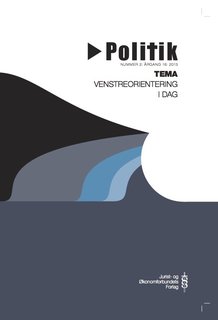Politisk framing er politisk magt
DOI:
https://doi.org/10.7146/politik.v16i2.27543Resumé
The political center-left in Denmark is in a crisis both when it comes to share of votes, policy formulation and rhetoric. Can the center-left regain some of its strength by actively employing strategic framing in the same measure as we have seen the conservatives in USA do it? is article introduces framing as phenomenon, illustrates the principal part that framing plays in politics through a series of concrete examples of political framing, including the con ict at Restaurant Vejlegården last summer. As the examples will show, framing is more than an American phenomenon. It is very relevant and already in play in a Danish context as well. e article will show that framing exists across countries, electoral systems and ideological movements. Fur- thermore, the article will demonstrate that the Danish center-left has a big challenge when it comes to setting the political agenda through framing, but also great possibilities to improve this e ort.
Downloads
Publiceret
Citation/Eksport
Nummer
Sektion
Licens
Forfattere, der publicerer deres værker via dette tidsskrift, accepterer følgende vilkår:
- Forfattere bevarer deres ophavsret og giver tidsskriftet ret til første publicering, samtidigt med at værket er omfattet af en Creative Commons Attribution-licens, der giver andre ret til at dele værket med en anerkendelse af værkets forfatter og første publicering i nærværende tidsskrift.
- Forfattere kan indgå flere separate kontraktlige aftaler om ikke-eksklusiv distribution af tidsskriftets publicerede version af værket (f.eks. sende det til et institutionslager eller udgive det i en bog), med en anerkendelse af værkets første publicering i nærværende tidsskrift.
- Forfattere har ret til og opfordres til at publicere deres værker online (f.eks. i institutionslagre eller på deres websted) forud for og under manuskriptprocessen, da dette kan føre til produktive udvekslinger, samt tidligere og større citater fra publicerede værker (se The Effect of Open Access).

